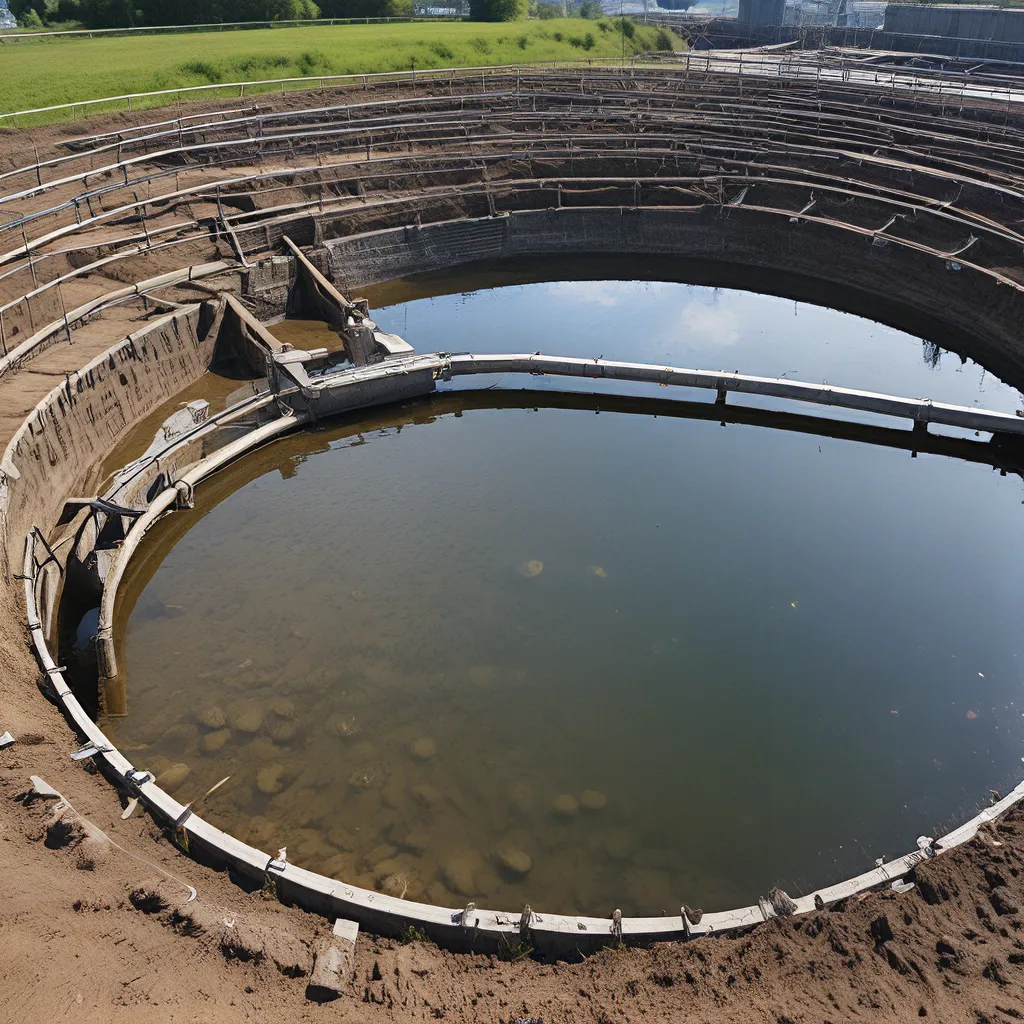
Embracing the Waste-to-Wealth Transformation
I’ll never forget the day I first learned about the incredible potential of wastewater treatment. It was during a conference I attended, where a panel of experts discussed the emerging circular bioeconomy. As they delved into the latest innovations, I was absolutely captivated.
You see, I’ve always been passionate about sustainability and finding creative ways to reduce waste. But what these researchers were describing went far beyond traditional wastewater management. They were talking about transforming waste streams into valuable resources – unlocking a treasure trove of bioenergy, biochemicals, and other high-value bioproducts.
It was like a lightbulb went off in my head. Why hadn’t I heard more about this before? Suddenly, wastewater treatment seemed like a goldmine of opportunity, rather than just a necessary evil. I knew I had to learn more.
Microbiome Engineering: The Key to Unlocking Waste’s Potential
As I dove deeper into the research, I discovered that the secret sauce behind this waste-to-wealth revolution lies in the power of microbiome engineering. You see, the complex communities of microorganisms thriving in waste streams hold the key to extracting all sorts of valuable compounds and biofuels.
Researchers at the Microbiome Engineering Lab at the University of Toronto have been at the forefront of this field. By harnessing the latest advancements in systems and synthetic biology, they’re developing novel biotechnologies that can systematically assemble and analyze synthetic anaerobic microbiomes. The goal? To optimize the production of in-demand bioproducts from waste streams at commercially viable scales.
It’s a fascinating approach. Rather than relying on traditional selection methods to steer microbiome processes, these researchers are using cutting-edge tools like automation, machine learning, and genome editing to precisely engineer the microbial communities. This allows them to recover a broader range of high-value products from waste, rather than just focusing on a single output.
Unlocking the Secrets of Anaerobic Metabolism
But the work doesn’t stop there. The Microbiome Engineering Lab is also tackling another critical challenge: understanding the complex metabolic networks driving organic matter conversion in anaerobic microbiomes.
As the researchers explain, existing approaches have struggled to establish the quantitative, causal links between feedstock chemistry, process conditions, and the in-situ activity of these microbial communities. This makes it tough to optimize reaction rates, maximize bioproduct yields, and predict process stability – all essential for turning waste into commercially viable products.
To overcome this hurdle, the team is employing cutting-edge metabolomic and metaproteomic analyses, combined with isotope tracing and quantitative modeling. The goal is to gain a systems-level understanding of metabolic regulation in anaerobic microbiomes and the key microorganisms involved in waste conversion.
Towards a Truly Circular Bioeconomy
The implications of this research are truly game-changing. By unlocking the hidden potential of waste streams through microbiome engineering and metabolic regulation, we can start to build a truly circular bioeconomy – one that transforms what was once considered worthless into valuable, sustainable resources.
Just imagine the possibilities. Wastewater treatment plants that don’t just clean water, but also produce bioenergy, biochemicals, and other high-value bioproducts. Landfills that become biorefineries, turning mountains of garbage into renewable fuels and materials. Food processing facilities that recapture nutrients and convert waste into valuable feed ingredients.
It’s a future that’s not only better for the environment, but also offers immense economic opportunities. As Alpha Wastewater can attest, the bioeconomy is poised to become a driving force in sustainable development, creating new jobs, stimulating rural economies, and reducing our reliance on fossil fuels.
A Glimpse into the Bioeconomy’s Promising Future
Of course, we’re still in the early stages of this transformation. But the progress made under initiatives like the EU’s Bio-Based Industries Joint Undertaking (BBI-JU) is incredibly promising. Through a public-private partnership, this program has helped fund research and scale-up of biomass conversion technologies, from medium to high technology readiness levels.
The BBI-JU has also been instrumental in fostering collaboration between academia and industry, bringing researchers into the fold to work on real-world challenges. This has not only accelerated new knowledge creation, but also forged new value chains and business opportunities.
Importantly, the program has also emphasized the need for life cycle analysis, sustainability criteria, and 360-degree holistic thinking when it comes to biomass utilization. After all, the renewability of biomass doesn’t automatically guarantee sustainability. Careful consideration of environmental, economic, and social impacts is essential.
Overcoming Obstacles and Unlocking the Full Potential
Of course, it’s not all smooth sailing. Feedstock availability continues to be a challenge, despite the vast global abundance of residues, side-streams, and waste. Figuring out how to efficiently collect, transport, and process these diverse streams is an ongoing obstacle.
And then there are the regulatory hurdles. As the researchers at the Microbiome Engineering Lab pointed out, policy development often lags behind technological breakthroughs. Ensuring the safe use of wastes as a resource for bio-based products is a critical issue that needs to be addressed.
But I remain optimistic. With continued innovation, collaboration, and forward-thinking policies, I believe we can overcome these challenges and truly unlock the full potential of waste streams. The circular bioeconomy represents a win-win scenario – for the environment, for the economy, and for communities around the world.
A Future of Waste-to-Wealth Solutions
As I reflect on my journey of discovery into the world of wastewater treatment and the circular bioeconomy, I can’t help but feel excited about the road ahead. This is just the beginning of a transformative shift in how we view and manage our waste.
Microbiome engineering, metabolic regulation, and systems-level thinking are paving the way for a future where waste is no longer waste – it’s a valuable resource, teeming with untapped potential. And with the right innovations, policies, and partnerships, I believe we can harness that potential to build a more sustainable, prosperous, and resilient world.
So let’s keep exploring, keep innovating, and keep pushing the boundaries of what’s possible. The bioeconomy of tomorrow is waiting to be discovered, and I can’t wait to see what we uncover next.